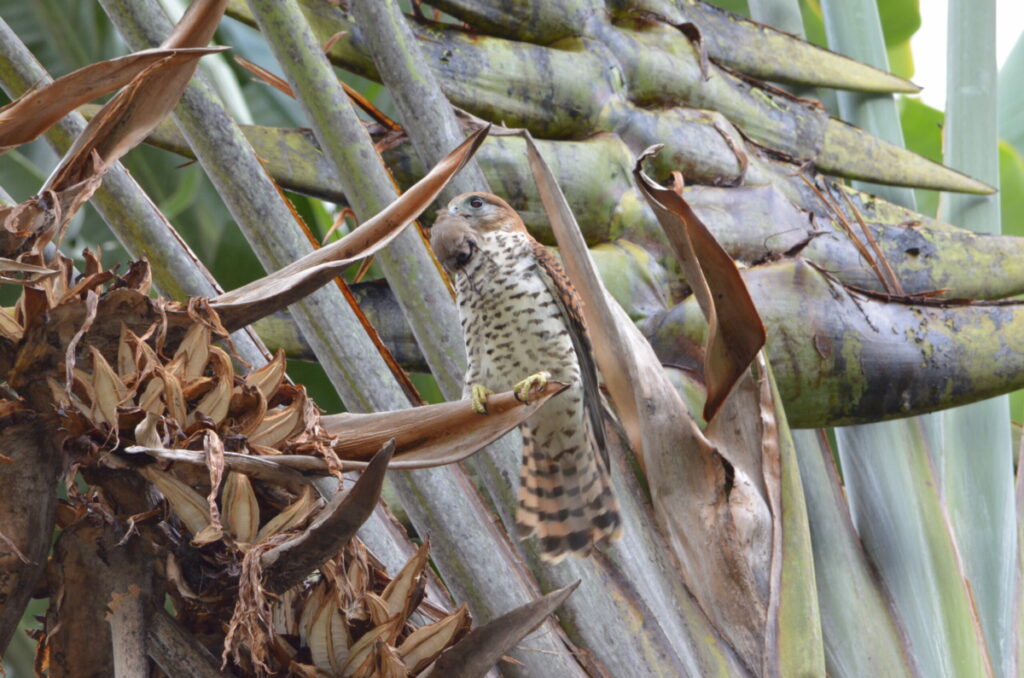A dilemma surrounds the survival of our national Kestrel: its population is best maintained where the Traveller’s Tree is most present. However, the latter is an invasive exotic plant, harmful to the biodiversity of our forests…
Dominique Bellier
The Kestrel has become an icon, thanks to the efforts of conservation authorities and NGOs to reintroduce it into its natural habitat. From being the world’s rarest bird of prey in 1974, with just 4 individuals, its population is said to have reached 1,000 birds in 2005. But it then declined again to just 330 individuals, so much so that the IUCN (International Union for Conservation of Nature) classified it as an “endangered species” in 2014!
Concerned by this phenomenon, scientists have carried out unprecedented observations, during the breeding season, on a selection of 28 nests, at Montagne Bambou in the southeast; from the nuptial parades of August 2015, to the fledging of the chicks around January 2016. During this period, the male catches and brings prey to his partner, who guards the nest of one to three eggs. The ecologists examined the frequency of provisioning (1.5 times per hour during the day), meal composition and habitat structure in the hunting area.
70% of meals consist of day geckos living on the traveler’s trees, and reproduction is most successful where these Ravenala are abundant… Although they help the kestrel to feed and contribute to the good health of the chicks, they are nonetheless invasive and harmful to the biodiversity of our forests… In February’s Journal for Nature Conservation, the authors of the study propose gradually replacing the Ravenala with endemic palms that will, in time, simultaneously ensure the Kestrel’s meal and the restoration of the forest environment.
